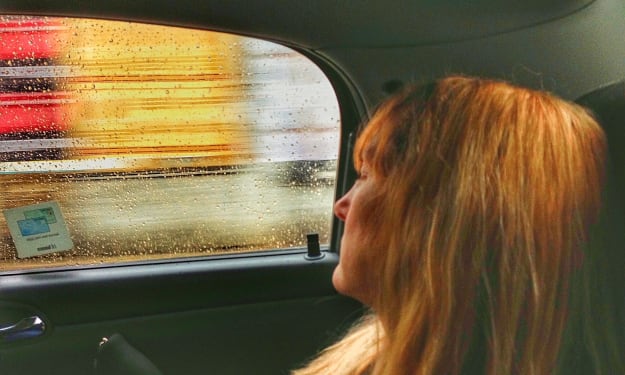
In the process of raising a cat, some popper coopers are always worried that the cat will not have enough to eat and will even hold the cat and feed it to make it full. This can eventually lead to boredom, but in fact, cats can actively show interest in eating after the 48th hour of life. Even without the help of a big cat or a popper cooper, a young cat that does not have its eyes open will actively crawl towards where the food is and try to eat.
Unlike some animals that need to be actively fed by their predecessors, a kitten's olfactory and digestive systems develop more rapidly than its visual system, which means that a kitten that cannot yet see the world can already sense the presence of food. Some cats with natural olfactory defects can even show interest in food, and zoologists have found that young cats will judge by temperature and the behavior of other young cats and try to move to where the food is.
Even if they cannot move successfully to the food, these kittens will let their heads face the food, which is a cat interest signal, meaning that the cat has a strong interest in exploring something that exists in this direction. Compared to cats, some animals are much more reserved, such as a portion of koalas, requiring the larger koalas to first put important to help the smaller koalas obtain important digestive substances. When the small koalas eat these unnameable things, to successfully digest all the food afterward. Cats living in the wild can even show greater adaptability, some young cats born 7 days old, can already make an effort for food, these cats will not only slightly extend the cat's claws toward the food, but will also try to make some cat purring, but because the development is not yet complete, you can only see the cat open the cat's mouth seems to be trying to breathe.
Under normal circumstances, cats do not starve themselves, and in the growth stage cats will generally have a very good appetite and a strong interest in all kinds of food. If a cat that has been under 3 years old becomes cautious about food, it is often related to the cat's health. Some cats will eat significantly less around the age of 5 due to early aging of the digestive system. But even so, when smelling a favorite food, the cat will still show obvious interest.
Influenced by the cat's mother
A kitten's interest in food is directly related to that of the older cat. If a big cat is a good eater, then its kittens tend to eat more than other kittens. These kittens can reserve more energy for their natural appetite advantage. This means that kittens have an increased likelihood of survival.
In the case of sufficient food, the mother cat is going to help the kittens choose better food. If there are three to five foods of significantly different quality in front of the kitten, the mother will give priority to the cat to eat the food with better nutrition. But domestic cats are influenced by additives, and some big cats will let their kittens eat the food with more additives first. But this also comes from the care of the big cats for the young cats, because the big cats mistakenly believe that these foods are of higher quality.
Not all kittens from the same big cat eat the same amount of food. One of these kittens will eat more, and this cat will subtly get more opportunities to eat. After the kittens are born, they will eat the same number of times according to the big cat's plan, but some smart kittens will try to take away the eating time of other kittens. But the big cats can remember where each kitten eats specifically, which means that the kittens can't muddle through.
But strange things appear, some big cats know that a kitten has eaten food, or will pretend to sleep and other ways to deliberately let this cat eat again. This cat is even allowed to eat at the feeding place of other young cats. This is a unique situation among cats, and this ambiguous behavioral characteristic is rare among some more rigorous animals. In the case of swallows, for example, most swallows will make sure that each young swallow gets an almost equal amount of food under normal circumstances. During feeding, the larger swallows need to be repeatedly given food, which means that if one of them is allowed to eat more, then the larger swallows must spend more time flying and searching for food. So the swallows will try to share the food fairly with the swallows, which is good for both the big swallows and the little swallows.
Other animals will handle this more ambiguously than cats, such as giant pandas. Many pandas are unable to clearly understand how their cubs are eating, and even pandas will appear to refuse to feed them. Compared to mother cats, giant pandas do not approach the nurturing of their cubs very critically. Elephants, on the other hand, are more cautious animals, and normally the herd will work together to care for the cubs, which get essentially the same access to food. But elephants are very intelligent animals, elephants allow each baby elephant according to their food and appetite to have differences in the length of time to eat. However, if a small elephant takes too long, then the elder elephants in the herd will politely remind each other.

The wisdom of cats
In contrast, cats have an interesting way of dealing with this. The cat tries to maintain some kind of fairness but allows for ambiguity. The result that emerges is that in a group of four to five young cats that make up a group of kittens, one cat will always stand out, but the remaining four will be in a very similar situation.
One of the benefits of this approach is that it produces a cat with a strong competitive edge. For most cat mothers, this is one of its purposes. Often this cat is the male, and through this male, a large cat can extend its potential influence further afield. The remaining four cats will grow more balanced because they have nearly the same feeding situation, which can also ensure a balanced kitten relationship. In fact, except for that dominant kitten, the play of the remaining kittens will generally remain in a very rational state, which means that the imbalanced dynamics between the kittens will not eventually affect the overall balance between the big cats and the kittens.
All big cats will deliberately raise a special kitten. It is worth noting the "time to leave the nest" of this kitten, which has the advantage but is often not the first to be blown away. Even some big cats will deliberately keep this cat for a longer period and allow this cat to have more feeding opportunities near the territory of the big cat.
This is already a kind of selfless care, because the kitten will have nothing to do with the big cat as long as it leaves, and it is hard to say that the big cat is doing this for its profit. So the love that the mother pours into the kitten is deep and it is a long-term consideration. It is very much like the ancient Chinese saying "Parents love their children, so they think far ahead", perhaps when the big cat looks at the young cat slowly leaving, the heart is full of expectation. This is great cat wisdom because cats know how to use this selfless care to raise the inherited genetic advantages of the cat. As a big cat, it is difficult to go further away to realize the dream, and looking at the back of the young cat leaving, perhaps the young cat takes away the dream of the big cat as well.
About the Creator
Ensenada
One cannot eat one's cake and have it.






Comments
There are no comments for this story
Be the first to respond and start the conversation.